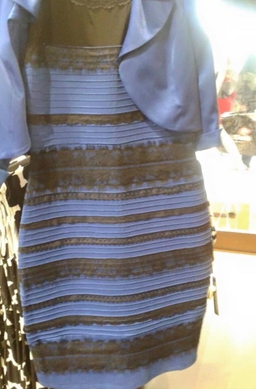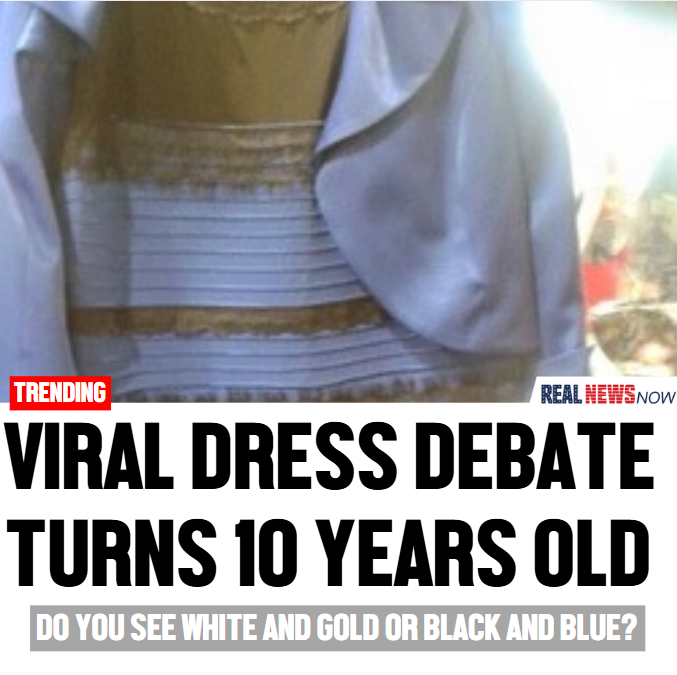In February 2015, a photograph of a seemingly unremarkable dress ignited one of the most memorable viral debates in internet history. The question was simple: what color is the dress? The answers, however, sparked a global phenomenon. Some swore the dress was white and gold, while others insisted it was blue and black. This puzzling optical illusion not only dominated social media but also sparked scientific inquiry into the nature of human perception.

How It All Began
The controversy began innocently enough when a Tumblr user posted a photo of the dress, asking for help to settle a disagreement. The post, captioned “Guys, please help me—is this dress white and gold, or blue and black?” quickly spread like wildfire. Within hours, social media platforms like Twitter, Facebook, and Instagram were flooded with heated debates, memes, and hashtags such as #TheDress, #WhiteAndGold, and #BlueAndBlack.
What set this viral moment apart was its universal appeal. People of all ages, from celebrities to scientists, joined the conversation. Pop star Taylor Swift declared it white and gold, while Kanye West sided with blue and black. Even major news outlets like CNN and The New York Times weighed in, amplifying the discussion.
The Science Behind the Dress
The dress debate wasn’t just about internet fun—it opened a window into the complexities of human perception. Scientists soon stepped in to explain why people saw the dress differently.
The phenomenon boils down to color constancy, a feature of human vision that allows us to perceive colors consistently under varying lighting conditions. The image of the dress, poorly lit and overexposed, forced viewers’ brains to make assumptions about the light source:
- White and Gold Viewers: These people assumed the dress was illuminated by a shadowy, cooler light. Their brains compensated by interpreting the colors as lighter and warmer.
- Blue and Black Viewers: These viewers perceived the dress as being under a bright, warm light, which made the colors appear darker and more vivid.
This perceptual ambiguity revealed just how subjective vision can be. As Pascal Wallisch, a neuroscientist, explained:
“What you see is influenced by what your brain thinks it should see.”
Ultimately, the manufacturer of the dress confirmed its true colors: blue and black. However, this did little to sway those who saw white and gold, proving that perception is far more complex than we often realize.
The Legacy of “The Dress”
Years later, the dress remains a cultural touchstone and a popular case study in psychology and neuroscience. It has been referenced in scientific journals, TED Talks, and university lectures as a prime example of how the brain processes visual information.
But the impact of the dress wasn’t limited to academia. It also demonstrated the unifying power of the internet. For a brief moment, people across the globe were united by a shared curiosity, debating a single image with friends, family, and strangers alike.
A Surprising Rediscovery
In a bizarre twist, a woman in Vermont recently stumbled upon an identical version of the viral dress at a yard sale. Amanda Rubinstein, the lucky finder, instantly recognized the infamous garment, describing it as “a piece of internet history.” Her discovery has reignited interest in the phenomenon, proving the enduring allure of the dress that divided the world.
Why It Still Matters
The dress was more than a viral moment; it was a mirror reflecting our collective fascination with how we perceive the world. It reminded us that reality isn’t always as straightforward as it seems and that our brains play a bigger role in shaping our experiences than we might think.
As the debate resurfaces from time to time, it’s clear that “The Dress” will remain a symbol of the internet’s power to connect and fascinate us—and of the endlessly surprising ways we see the world around us.

